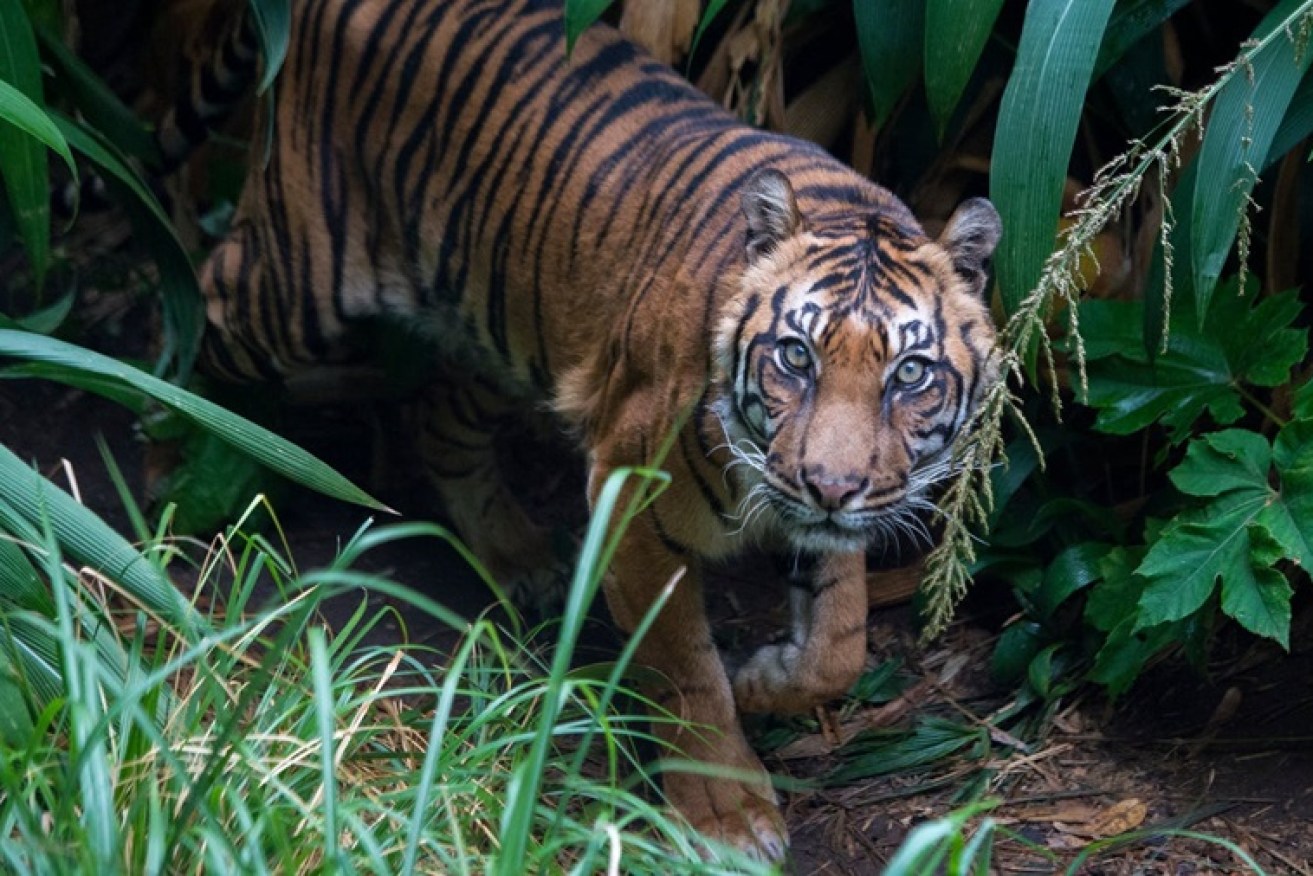Look, no hands! Taking a tiger’s pulse just got a lot easier


South Australian researchers have trialled a stress-free way of conducting health checks on dangerous animals. Photo: Adelaide Zoo
For years researchers have been trialling hi-tech means to conduct health checks on difficult and dangerous animals at a distance – thus avoiding distressing the beasts, knocking them out or being eaten by them.
Microwave radar, Doppler radar and thermal cameras have been trialled with some success, but had limitations.
Now, scientists from the University of South Australia at Adelaide Zoo have gone the cheap and cheerful route with digital cameras and computer software – and developed a new way to measure the pulse and breathing of lions, tigers, baboons and pandas at a distance.
The new technique has worked so well in a pilot study, there are plans to eventually conduct trials in the wild, assessing the wellbeing of endangered species.

Wang Wang and Fu Ni, Australia’s only breeding pair of Giant Pandas, underwent health checks without even knowing. Their pulse rate averaged 87.51 beats per minutes, well within the normal range. Photo: Adelaide Zoo
Why it matters
As the authors write in a newly published, open-access paper: monitoring cardiopulmonary activity (pulse rate and breathing rate) constitutes a fundamental component of animal care, but “capture and restraint of an animal may induce stress and long-term trauma that also affect the physiological states being measured in both the immediate and longer term”.
In addition, “handling animals, and placing them in communal clinical facilities may increase the risk of spreading infectious diseases between humans and animals or between animal patients”.
And of course, many species “are potentially dangerous due to their size, or their propensity to display innate defensive/aggressive behaviours and fight/flight reflexes; this includes several of the species involved in this study”.
How the scientists solved the problem
In the university’s study, using a digital camera mounted on a tripod, nine species of Adelaide Zoo’s animals were filmed for three minutes, up to 40 metres away, picking up tiny movements in the chest cavity that indicate heart and breathing rates.
Video footage of these small movements were then analysed using an algorithm to determine the breathing and pulse rates.
The animals filmed included a giant panda, African lion, Sumatran tiger, orangutan, Hamadryas baboon, koala, red kangaroo, alpaca and a little blue penguin.
The animal with the lowest average pulse rate was the male African lion: 54.04 beats per minute (plus or minus 11 beats).
The animal with the highest pulse rate was the blue penguin: 219.29 (plus or minus 20 beats per minute), not because it was freaking out. Birds have a faster metabolism and heart rate than mammals, an adaptation for flight – or in the penguin’s case, flight under water.
Professor Javaan Chahl, a remote sensing engineer at the University of South Australia and one of the study leads, in a prepared statement said the study was done “without any physical contact with the animals and without disrupting their daily routine”.
“Until now, monitoring vital signs of wild animals has used specialised equipment and usually required disturbing them or their environment,” he said
“We showed through this experiment that digital cameras can successfully extract cardiopulmonary signals from the animals in a zoo setting.
“The technique needs refining and more validation, but it demonstrates that wild animals can be remotely monitored for signs of poor health, allowing for earlier detection of illness and fewer unconscious trips to the vet.”
The researchers concluded that the method shows promise for applications in veterinary practice, conservation and game management, animal welfare and zoological and behavioural studies.








